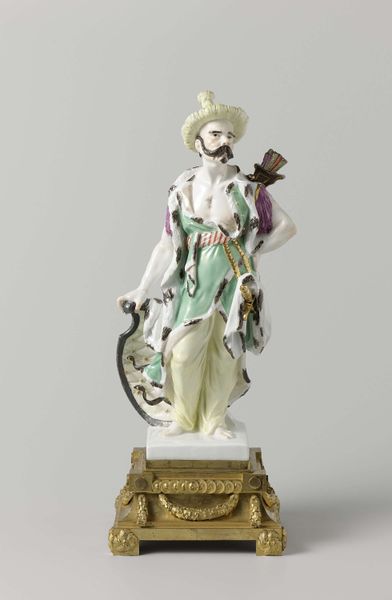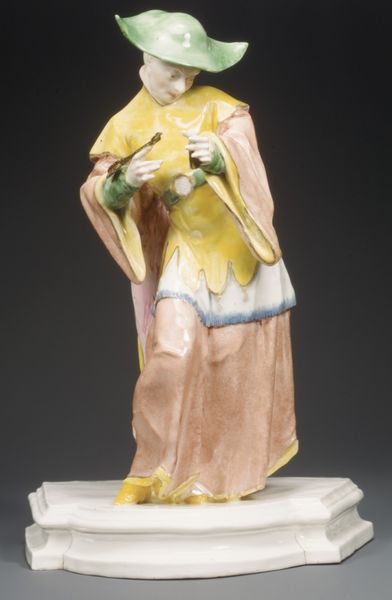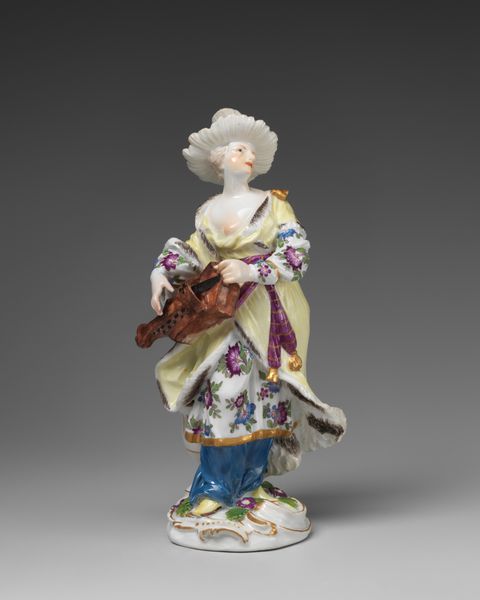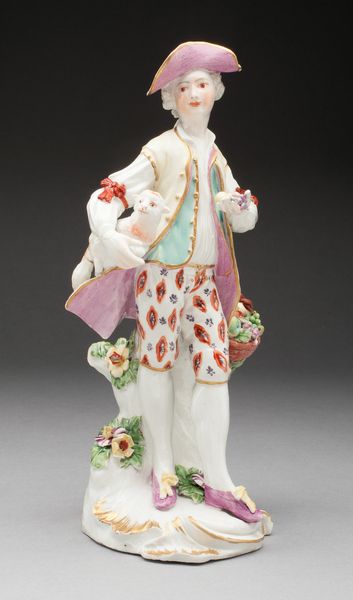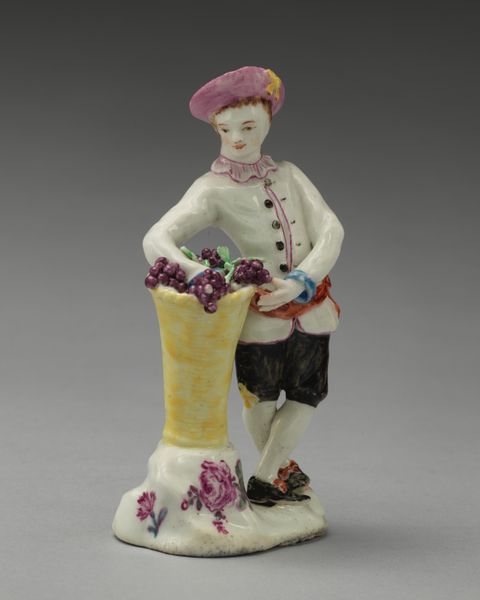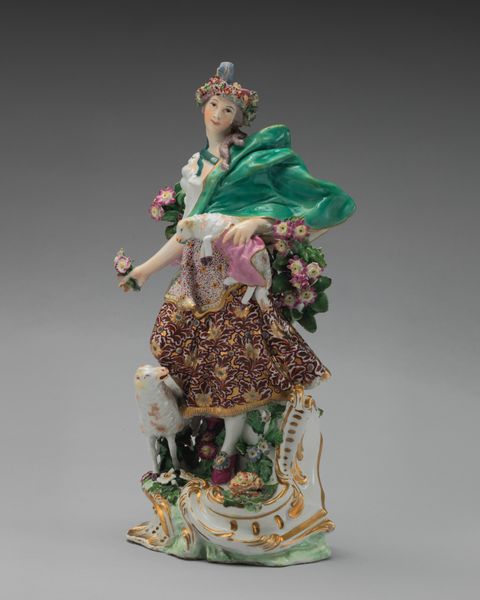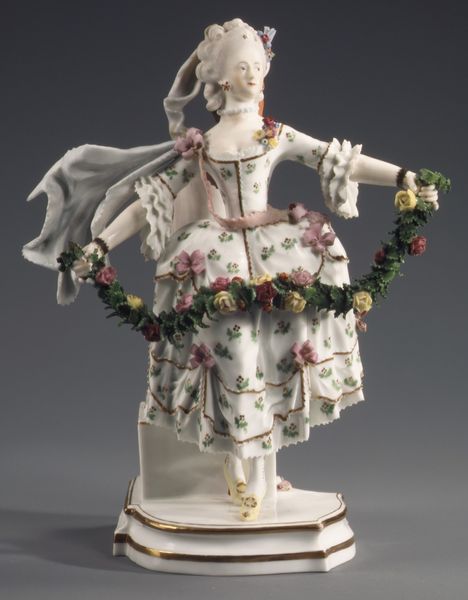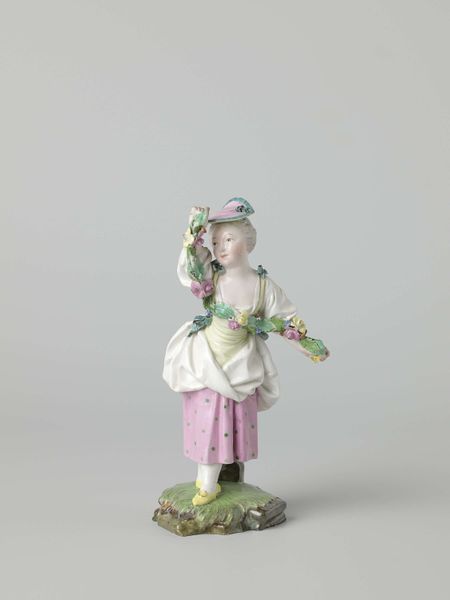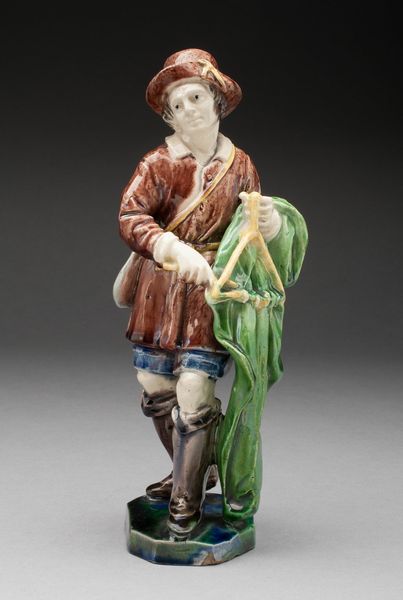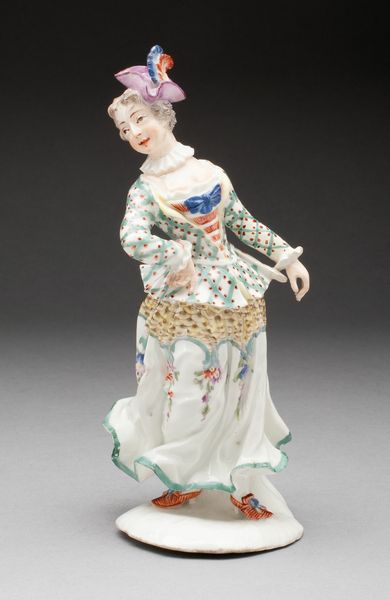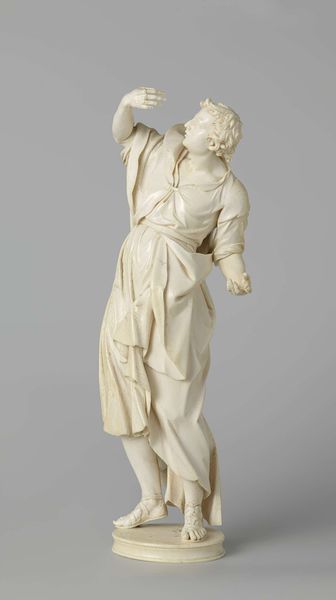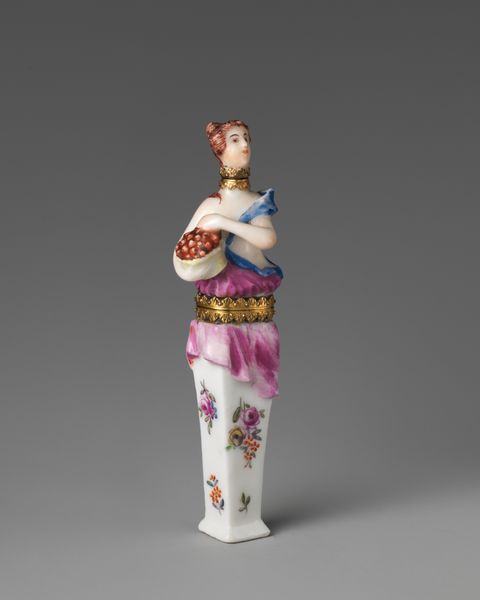
porcelain, sculpture
#
portrait
#
porcelain
#
figuration
#
sculpture
#
genre-painting
#
decorative-art
#
rococo
Dimensions: height 39.2 cm, width 17.2 cm, depth 16.7 cm, height 30.5 cm
Copyright: Rijks Museum: Open Domain
These figures, called 'Malabars', are made from delicate porcelain, meticulously painted in vibrant colors by an anonymous artist. Porcelain, often referred to as 'white gold', was a prized material, symbolizing luxury and refinement. The process of creating these figures involved highly skilled labor, from molding and firing the clay, to the painstaking detail of hand-painting each piece. The material itself, with its smooth, translucent surface, invites touch, yet its fragility demands respect. The figures' attire reflects an imagined vision of exoticism, a fashionable taste among European elites. The labor involved in the production of such items, and their circulation, often obscured the realities of colonial exploitation that fuelled the demand for these luxury goods. Considering the craftsmanship and the context in which it was made, it's clear that the Malabars represent more than just decorative objects. They embody a complex interplay of artistry, global trade, and cultural appropriation, challenging us to question the social and economic forces that shaped their creation.
Comments
rijksmuseum about 2 years ago
⋮
These exotic figures are meant to portray inhabitants of Malabar, a coastal region in India. The Malabars were visited and described by various explorers. In 18th-century Europe they acquired near-mythical status. The statuettes are sheer fantasy: the figures wear a mixture of exotic robes, hats, and accessories.
Join the conversation
Join millions of artists and users on Artera today and experience the ultimate creative platform.
